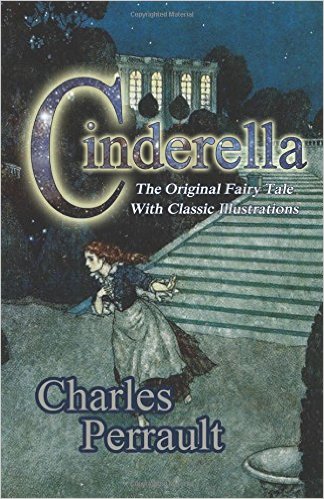
An illustrated cover of Charles Perrault’s Cinderella. Fair Use.
When people say the name Cinderella, many jump to the 1950’s Disney version of the story. Or perhaps, you think of Disney’s 2015 reimagining. However, few know that the origins of the folktale date to the 1st century BCE, with its current format being attributed to French author Charles Perrault in 1697 and his book Cendrillon. This story, like many others was then retold by the Grimm Brothers in their folktale collection of Grimm’s Fairy Tales, first published in 1812.
Cendrillon tells of a stepmother who enlists her husband’s daughter in the worst of the housework, purely because the girl’s beauty made the stepmother’s two daughters look plain in comparison. When the girl finished her work, she would sit amongst the cinders. This led to the nickname “Cinderwench” from her stepmother and her eldest stepsister. The younger sister was not as bad, and called the girl “Cinderella” instead. On the first day of the prince’s ball, a fairy godmother appeared and fashioned Cinderella clothes that were gold and silver. As per the fairy’s rules, Cinderella left the ball at 11.45pm and was home before the magic disappeared. However, on the next evening she lost track of time with the prince, and lost her slipper in her rush out of the door at midnight. The Prince declared that he would marry whoever the shoe fitted and sent his men in search of his love. When it reached Cinderella, she bantered with her sister and the guards who were so astounded by her beauty that they let her try it on. The slipper fitted, and the prince and Cinderella lived happily ever after.
The Grimm version of Cinderella follows the same general plot as Perrault’s, but is far darker than any other variant. This Cinderella is given wooden shoes by her step mother, and regularly has to pick out dried lentils from the cinders on the floor which her sisters maliciously scattered. Her bed was taken away, and she was made to sleep in the hearth which earnt her the name of Cinderella. Again, a magical dress is created and at midnight, a golden slipper is left behind. This shoe eventually reaches the home of Cinderella and is given to the eldest sister. Their mother tells her to cut off her toes in order to fit her foot in the shoe, as “when you are queen, you will no longer have to go on foot.” This works and the prince rides off with her, until the song of a pigeon makes him notice the blood pouring from her shoe. The second sister is then told to try on the shoe, and is this time told by her mother to cut off a piece of her heel, as “when you are queen, you will no longer have to go on foot.” Again, this works and the prince rides off with her and again hears the song “the shoe is too tight, this bride is not right!” Finally, the prince realises that it is Cinderella he’s looking for, and they are married. While the sisters leave the church, the pigeon pecks out one of each of their eyes and curses them all with blindness for their wickedness.
The popular Aarne-Thompson categorisation used in relation to folklore paints Cinderella as a “persecuted heroine.” This description relates to a character who has been abused by a stepmother or stepsisters. They then experience an intervention by the spirit of her dead mother, a supernatural being, or an animal who provide her with beautiful clothing. She then meets a prince, who attempts to keep her and is eventually reunited with him by a “slipper test.” This categorisation can then be used to connect Cinderella with the 1st century BCE tale of Rhodopis, a Greek slave girl.
The tale of Rhodopis comes to us from the Greek geographer Strabo, who retold the story in the year 1 CE. She was a beautiful ancient Greek slave girl who was bathing in Naucratis when an eagle stole one of her shoes, which had been given to her by her previous owner. While the Pharaoh Amasis was dispensing his justice in the open air of Memphis, the eagle dropped her red slipper into his lap. The king was so intrigued by this that he sent his men across Egypt in search for the woman who owned the beautiful shoe. She was found and taken to the Pharaoh, who thought her to be so beautiful that he fell in love with her immediately and made her his queen. The later aspect of the step family is taken up by her slavers in this early tale, and the story arguably has remarkable similarities with the story of Cinderella.
Overall, the folktale of Cinderella has been constantly reimagined over thousands of years. As with many other fairy tales, I am confident that her legend will exist for many more.
-Devon Allen
Curator
Girl Museum Inc.
